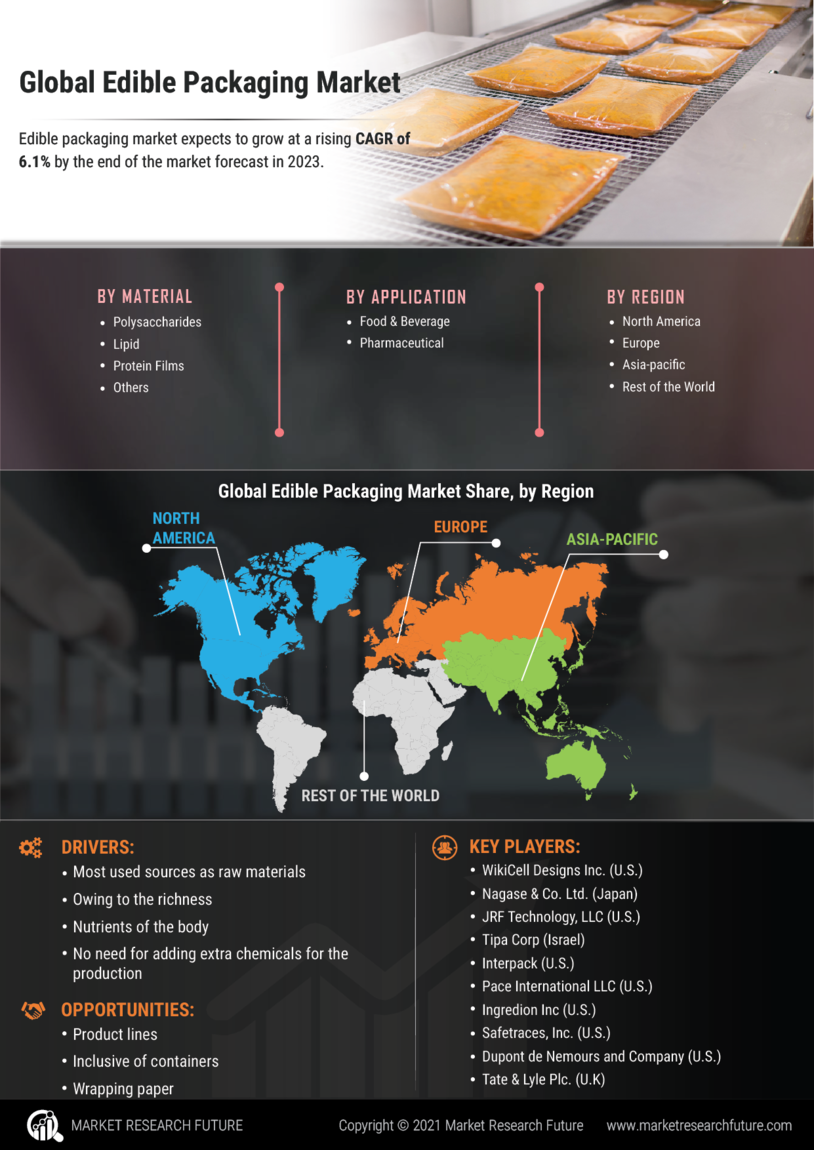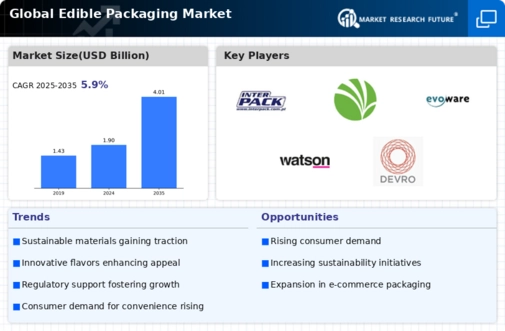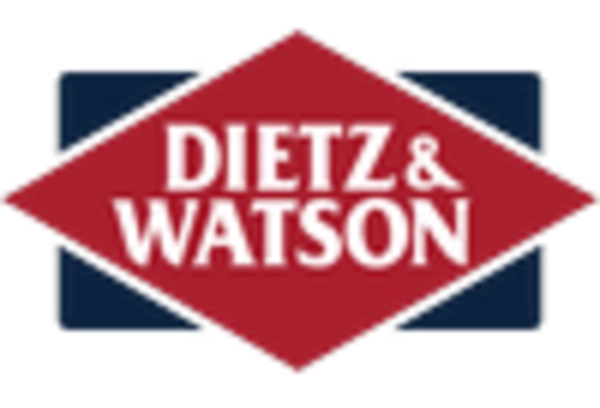Regulatory Support
Regulatory support is a pivotal driver for the Global Edible Packaging Market Industry, as governments worldwide increasingly recognize the need for sustainable packaging solutions. Policies aimed at reducing plastic waste and promoting biodegradable materials are encouraging the adoption of edible packaging. For instance, various countries are implementing regulations that incentivize the use of eco-friendly packaging alternatives. This supportive regulatory environment is expected to facilitate market growth, with projections indicating a rise to 4.01 USD Billion by 2035. As regulations evolve, the industry is likely to benefit from increased investment and innovation.
Market Growth Projections
The Global Edible Packaging Market Industry is projected to experience substantial growth, with estimates suggesting a market size of 1.9 USD Billion in 2024 and a remarkable increase to 4.01 USD Billion by 2035. This growth trajectory indicates a compound annual growth rate of 7.04% from 2025 to 2035. Such projections reflect the increasing consumer acceptance of edible packaging as a viable alternative to traditional materials. Factors contributing to this growth include heightened environmental awareness, technological advancements, and evolving consumer preferences. As the market expands, it is likely to attract new entrants and foster innovation.
Health and Safety Concerns
Health and safety concerns significantly influence the Global Edible Packaging Market Industry, as consumers become more discerning about food safety. Edible packaging not only enhances the shelf life of products but also reduces the risk of contamination associated with traditional packaging materials. For example, edible films made from natural ingredients can provide a protective barrier against pathogens. This trend is expected to contribute to the market's growth, with projections suggesting a rise to 4.01 USD Billion by 2035. As health-conscious consumers seek safer food options, the industry is poised for expansion.
Sustainability Initiatives
The Global Edible Packaging Market Industry is increasingly driven by sustainability initiatives as consumers and businesses alike prioritize environmentally friendly solutions. With rising awareness of plastic pollution, edible packaging offers a viable alternative that reduces waste. For instance, companies are exploring materials derived from seaweed, rice, and other natural sources. This shift aligns with global efforts to minimize environmental impact, potentially leading to a market valuation of 1.9 USD Billion in 2024. As regulations tighten around plastic use, the demand for edible packaging is likely to grow, indicating a robust trajectory for the industry.
Technological Advancements
Technological advancements play a crucial role in shaping the Global Edible Packaging Market Industry. Innovations in material science and processing techniques have led to the development of more effective and versatile edible packaging solutions. For instance, the incorporation of nanotechnology can enhance the barrier properties of edible films, improving their functionality. These advancements not only cater to diverse food products but also align with consumer preferences for convenience and quality. As the industry evolves, it is likely to witness a compound annual growth rate of 7.04% from 2025 to 2035, reflecting the impact of technology on market dynamics.
Consumer Demand for Convenience
The Global Edible Packaging Market Industry is significantly influenced by consumer demand for convenience. As lifestyles become increasingly fast-paced, there is a growing preference for on-the-go food options that require minimal preparation. Edible packaging caters to this demand by providing a ready-to-eat solution that eliminates the need for additional waste disposal. For example, edible wrappers for snacks and meals are gaining traction among busy consumers. This trend is expected to bolster market growth, contributing to an anticipated valuation of 1.9 USD Billion in 2024. The convenience factor is likely to remain a key driver in the coming years.

















Leave a Comment